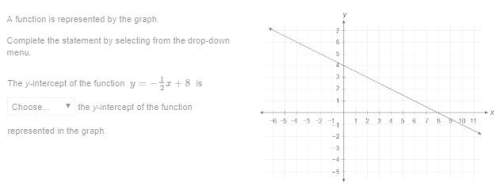Use the law of sines to find the value of a.
Triangle A B C is shown. Angle C A B is 40...

Mathematics, 27.05.2020 23:08 mccauley
Use the law of sines to find the value of a.
Triangle A B C is shown. Angle C A B is 40 degrees and angle A B C is 95 degrees. The length of B C is a and the length of A C is 4.7 centimeters.
Law of sines: StartFraction sine (uppercase A) Over a EndFraction = StartFraction sine (uppercase B) Over b EndFraction = StartFraction sine (uppercase C) Over c EndFraction
What is the best approximation of the value of a?
2.4 cm
2.7 cm
3.0 cm
3.3 cm

Answers: 1


Other questions on the subject: Mathematics

Mathematics, 21.06.2019 17:00, 19youngr
You are on a cycling trip around europe with friends. you check the weather forecast for the first week. these are the temperatures for the week. sun mon tues wed thurs fri sat 16°c 20°c 24°c 28°c 28°c 23°c 15°c what is the mean temperature forecast for the week?
Answers: 1

Mathematics, 21.06.2019 17:40, shaviaa
Atriangle has an area of 72 square inches. if the base of the triangle has a length of 18 inches, what is the height of the triangle? use the formula for the area of a triangle: area = (base)(height) type a numerical answer in the space provided. do not include the units or spaces in your answer.
Answers: 1

Mathematics, 21.06.2019 19:20, ayeofaygo5168
The fraction of defective integrated circuits produced in a photolithography process is being studied. a random sample of 300 circuits is tested, revealing 17 defectives. (a) calculate a 95% two-sided confidence interval on the fraction of defective circuits produced by this particular tool. round the answers to 4 decimal places. less-than-or-equal-to p less-than-or-equal-to (b) calculate a 95% upper confidence bound on the fraction of defective circuits. round the answer to 4 decimal places. p less-than-or-equal-to
Answers: 3

Mathematics, 21.06.2019 19:30, ray2220
The position of a moving particle is given by the position function: f(t)=-9t-t^2-0.2t^3+0.1t^4 a. at what time does the particle reverse direction? b. when is the displacement positive? (round one decimal place and answer in interval notation) c. when is the displacement negative? (round one decimal place and answer in interval notation) d. when is the particle’s acceleration positive? (round one decimal place and answer in interval notation) e. when is the particle’s acceleration negative? (round one decimal place and answer in interval notation)
Answers: 3
You know the right answer?
Questions in other subjects:

Mathematics, 02.07.2019 04:30



Mathematics, 02.07.2019 04:30



Biology, 02.07.2019 04:30

Mathematics, 02.07.2019 04:30

History, 02.07.2019 04:30




